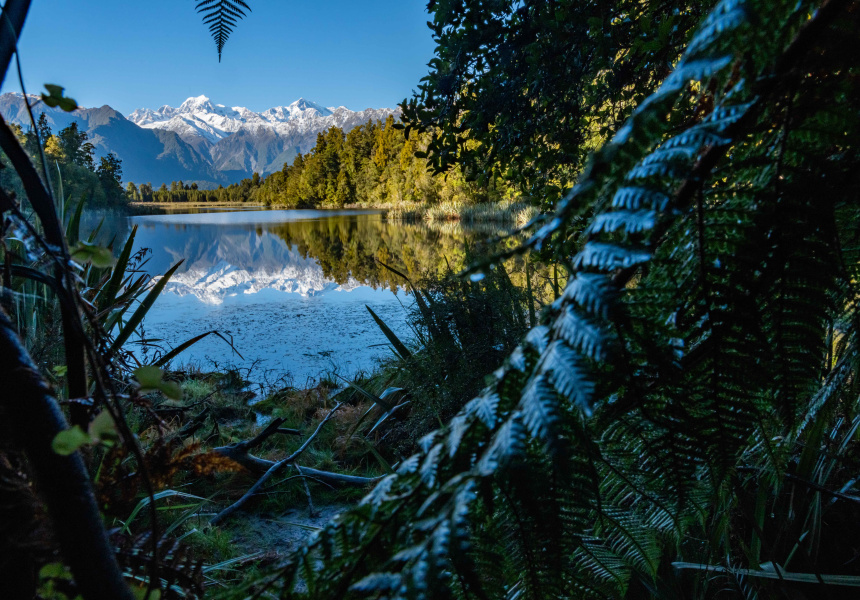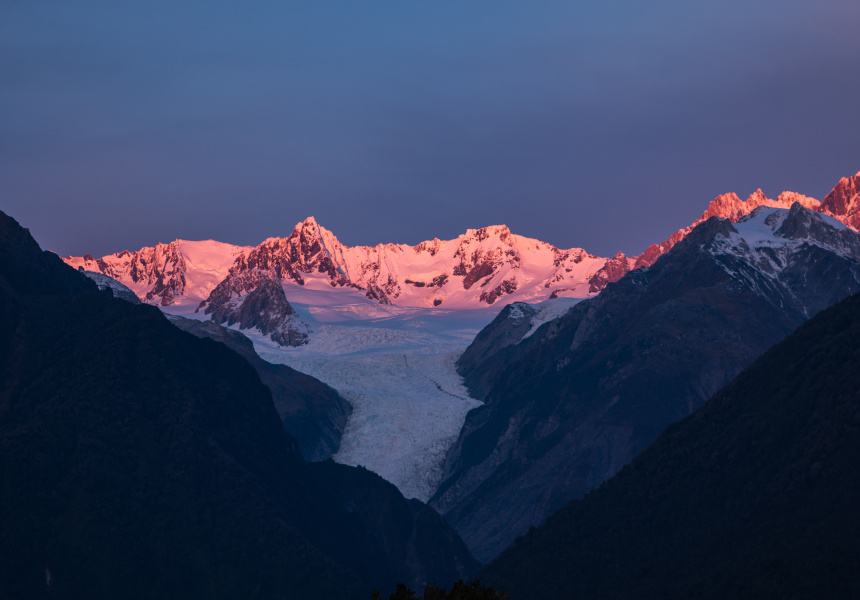Fox Glacier is a mass of impressive white rock and ice that descends down to a lush rainforest. A glassy lake reflecting an inverted image of the scenery sits at the bottom. Basically, you need to see it first hand to properly get it.
“You’ve got mountains over 3,000 metres at the top and then rainforests where it rarely gets below zero degrees,” says Marius Bron, Operations Manager and Head Guide for Fox Glacier Guiding. “It’s cool having this juxtaposition of extreme cold with green bush around it. There aren’t many places in the world where you get that co-existing.”
Bron was in his early twenties when he was drawn to the glaciers on the central west coast of New Zealand’s South Island. He had worked in the ski industry but wanted a summer job that was still in the mountains. More than two decades later, he’s still in thrall to Fox Glacier and its ever-changing terrain.
Never miss a moment. Make sure you're subscribed to our newsletter today.
SUBSCRIBE NOWAlong with the nearby Franz Josef Glacier, also located in Westland Tai Poutini National Park, Fox Glacier is a draw for hikers and climbers, with some even caving on the glacier itself. Bron says Fox Glacier is the third-largest glacier in New Zealand at the moment, currently stretching just over 12 kilometres in length.
Visitors travel by helicopter to the glacier on a daily basis. There are various ways to take it on, from three-hour tours to more intimate all-day trips that include adventure hikes with more equipment and climbing. The ice-climbing is particularly popular, led by a professional guide.
Of course, you need to plan the timing of your trip carefully (including checking conditions and booking a guide). The ultra-photogenic blue ice lacing the glacier’s short-lived tunnels and caves can shift at a rapid rate during summer and other warmer weather. “They go through a bit of a life cycle. [In summer] the life cycle is quite short. You might get a week or two out of a cave,” says Bron. “But in winter a tunnel like that could last two or three months.”
The glacier itself isn’t the only selling point for the area. The closest town, also called Fox Glacier, offers a front-row seat to the aforementioned rainforest and other wilderness adventures. Fox Glacier Guiding also provides an off-track and off-glacier E-bike and Hike experience that covers Mount Fox and the adjacent valley. “It’s quite a cool combination of bikes and hikes,” says Bron.
There are two main tunnels at Fox Glacier. One is formed as the glacier descends down the icefall to a flatter area below, causing the ice to bulge out into wide arches. The other type is melt tunnels, where thawing water from the glacier freezes into rounded tunnels or arches. (That same water feeds the winding Fox River.) Again, both types only last for a limited time, as the glacier is always in flux.
“They’re constantly moving and adjusting,” Bron says of the four alpine glaciers feeding Fox Glacier.
So, what does that mean for visitors? That several trips a year to Fox Glacier is completely justifiable.
This article is produced by Broadsheet in partnership with Tourism New Zealand.
For more great content, follow Broadsheet NZ on Facebook and Instagram.




